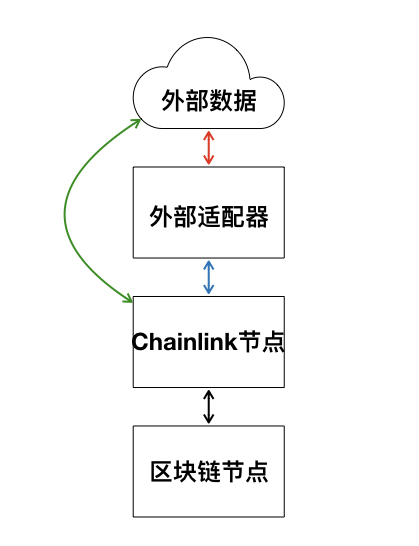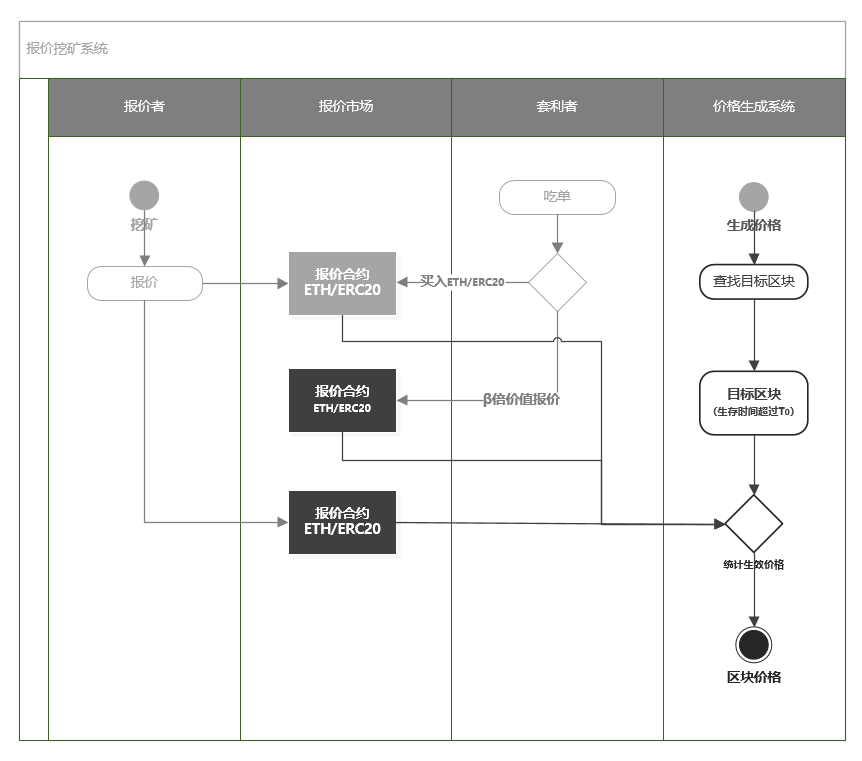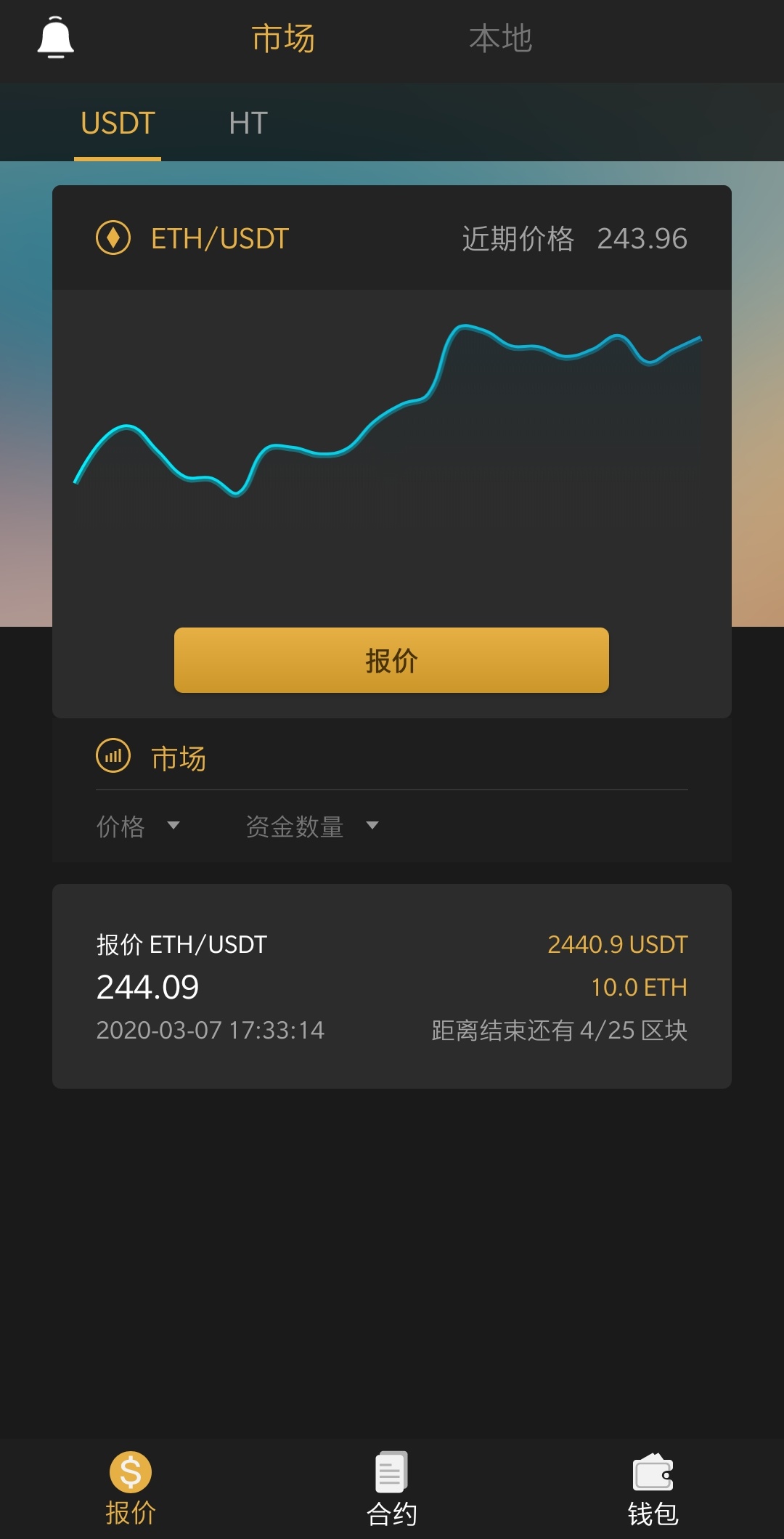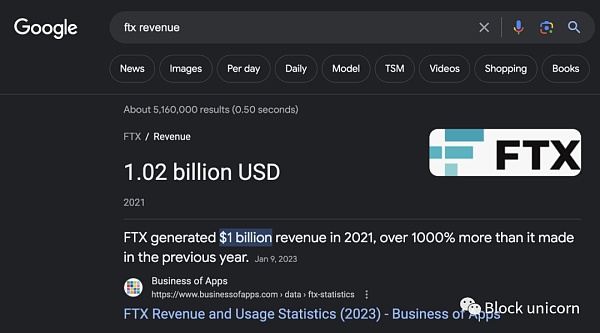Comprehensive comparison of Chainlink, NEST, MakerDao oracles
The blockchain is called a trusted machine. The biggest core innovation of the blockchain is that decentralization solves the problem of trust. We don't need to trust and rely on third-party institutions for value transfer . Among them, smart contracts play an important role. It is a set of contracts defined in digital form, helping the contract participants to execute the agreement to complete the task, saving time and tedious steps.
In the process of value interaction with blockchain smart contracts, people often need to use the information of the off-chain world, so there is a problem: we live in the real world, and many rules and conclusions of experience are obtained from the information off-chain Although we are interacting with the on-chain world, we still need to use the off-chain information for reference and decision-making. To transfer information from off-chain to on-chain requires people to operate; in the process, it is inevitable to face the problem of de-trusting the information on the chain, and the on-chain link of the information (real data) off-chain will inevitably appear Fault, we call this problem the oracle problem. Vitalik emphasized the issue of oracles in Article 16 of "Reviewing the Economic Progress of the Blockchain in the Past 5 Years and Emerging Issues" , focusing on the element of "getting real data ."
The function of the oracle is to upload the data facts of the off-chain world to the blockchain simultaneously, and complete the synchronization of the blockchain and the real-world data. It allows certain smart contracts to respond to the uncertain off-chain world. It is the only way for smart contracts to interact with the real world and the interface between the blockchain world and the real world for data interaction.
Through the introduction above, we have understood the origin of the oracle problem and the important influence of the oracle on the development and application of blockchain technology. Next, we will make a comprehensive comprehensive comparison of the three different types of oracle machine solutions, so that everyone can clearly understand the current state and trends of the oracle machine market.
- Wanxiang Blockchain Public Welfare Hackathon is coming to an end, Station B will broadcast the final road show live throughout
- Viewpoint | Blockchain technology has become a new impetus for the development of "new infrastructure"
- How to use threshold signatures to generate random beacons?
The first type: "Alliance" oracles represented by MakerDAO
The MakerDAO oracle uses 14 miners to feed prices. The 14 anonymous miners represent different entities. They obtain prices from a centralized exchange, calculate the average number, and upload them to the oracle smart contract. The oracle then calculates the median. So far, these 14 miners have been kept private for security reasons, because if someone knows half of them, there is a risk of extortion to change the price; therefore, the MakerDAO oracle system has a high Centralized risk, we call this type of oracles as centralized oracles .

MakerDAO is an established DeFi project on Ethereum. When its products were launched in 2017, there was no mature oracle network in the market. This simple centralized oracle machine solution was unavoidable. At the same time, in order to prevent the oracle machine In the event of a price attack, MakerDAO made some special security restrictions on its price acceptance mechanism. In the plan of the MakerDAO oracle V2 version, its oracle program will gradually develop into an "alliance" oracle, and some DeFi The project is listed as a member of the alliance to jointly predict the price of the oracle.

In addition to MakerDAO, some smaller DeFi projects also adopted this highly centralized oracle machine solution in the early stages of their development, at the expense of the security of the product itself to reduce development costs and cycles; moreover, some DeFi The developer team was not aware of the security issues …
The second type: "indirect" oracles represented by Chainlink
The Chainlink oracle is through the work order allocation and collaboration between on-chain contracts and off-chain distributed nodes, through reward and punishment mechanisms (reputation contracts, which help to select the most suitable oracles) and aggregation models (aggregating data from multiple data sources) In this way, data request and feedback are performed. Compared to the centralization of the MakerDAO oracle, Chainlink is obviously more in line with the decentralization of the blockchain. Currently, Chainlink oracles provide smart contract developers with some simple off-chain data, such as price information and website API data. In simple terms, the Chainlink oracle predicts the offline data (price) to the chain by “feeding data” to the on-chain contract, and then feeds it back to the data caller. We call this type of oracle scheme “indirect” Oracles.

There is a fundamental problem with indirect oracles , that is, the verification of data is not direct, but indirectly guarantees the authenticity and validity of the data by verifying the uploader. Another problem with indirect oracles is that the credit risk of the node that uploaded the data determines the attack cost of the oracle data. If based on the price provided by the oracle machine, 1 trillion US dollars of assets are derived, the credit of the oracle machine node should also match it, which is obviously impossible in reality. No matter how random the node is, it cannot be guaranteed. This is an essential issue, not a technical issue, so indirect oracles can only be used in small-scale, non-financial scenarios.
Except for Chainlink oracles, most oracle solutions on the market belong to "indirect" oracles, such as Tellor, DOS.Network, etc.
The third category: "price facts" oracles represented by NEST
NEST is a distributed price fact oracle network. It defines and implements a new mechanism for generating on-chain facts on the blockchain. The price facts of the off-chain market are simultaneously generated through the way of miner bilateral asset quotes. On the chain, and combined with the NEST quote mining mechanism, it encourages miners to make it a set of logical closed-loop distributed quote system, which perfectly synchronizes the off-chain price facts on the chain. We call such predictors such as NEST. A machine for "price facts" .

The NEST oracle solution adopts a new idea of reverse verification. Quotation miners must take real gold and silver to participate in the quotation, not just upload price data to the on-chain contract. Regarding the specific operation mechanism of the NEST oracle, we take the price of ETH / USDT as an example:
- Any participant can pass their approved price to the quotation contract, such as 1 ETH = 200 USDT, and then enter these two assets into the quotation contract according to the price ratio, which is generally 10-100 ETH and collect 1% of the ETH scale is used as a processing fee to mine and get NEST incentives;
- After entering, wait for T0 time (currently 25 blocks, about 5 minutes). During this time period, anyone can use the price of the bidder to buy ETH or USDT. If no one trades in T0, the price will be If the system is employed, the price will be invalid. After this time, assets can be retrieved;
- If someone is willing to transact with the bidder, at the same time as he transacts, he must report a new price in accordance with the above criteria, so that p1, p2… price chain is formed after the initial quote P0.
- The scale of a trader's offer is an integral multiple of the beta of his trade scale, where beta> 1, which means that the price chain will eventually terminate (downtime) as the scale expands, and the cost of the perpetrator will increase geometrically, thus counteracting Offensive behavior.
- NEST value: The mining fee and the use of the oracle need to pay a certain ETH fee, which is unified into the dividend contract and distributed to all circulating NESTs.

The performance of such a NEST distributed price fact prediction machine scheme is as follows: its data is accurate, sensitive, and resistant to attack, and it can directly verify the data, and the verifier can be any third party, there is no threshold Restrictions; In addition, the NEST oracle network system is highly distributed, and anyone can become a quote miner, participate in quote mining, and enter or exit freely.
Finally, we summarize the current status and development trends of the oracle:
1) The centralized oracle machine solution inevitably has a centralized system risk and cannot be rid of it.
2) The essence of price data on-chain is not to "upload" data information to the chain, but to form (generate) price facts on the chain; whether it is a centralized upload of price information or a decentralized upload, It means that the off-chain price facts are generated before the on-chain. For a true oracle system, the off-chain price facts should be synchronized on the chain.
3) The NEST distributed price fact oracle provides a groundbreaking oracle scheme, which is unique in that it forms a price fact directly on the chain, while other indirect oracle systems simply upload a price fact to the chain This is the essential difference!
4) In addition, the cost and credit scale of the price of the oracle machine must be able to support DeFi far beyond this scale to be the correct oracle machine; each piece of data generated by the NEST distributed price fact oracle machine is real gold and silver for miners De-verified, and its chain structure is highly resistant to attack.
Regarding the overall oracle machine market development trend, as V God emphasized in Article 16 of his article "Reviewing the Recent 5 Years of Blockchain Economics, and Emerging Issues": We must focus on the oracle machine problem. On the element of "getting real data", the NEST distributed price fact prediction machine solution does this. It represents a new trend in the development of the prediction machine industry. I also hope that prediction machine enthusiasts pay more attention to NEST The oracle scheme and its developments.
We will continue to update Blocking; if you have any questions or suggestions, please contact us!
Was this article helpful?
93 out of 132 found this helpful
Related articles
- Swiss Crypto Valley Association Chairman: Central bank digital currency is the next stage in the development of decentralized finance
- Perspectives | Why Should You Hold Bitcoin?
- Babbitt Column | Pan Chao: Automated Market Maker DEX Economics
- Bitcoin Secret History: How Dorian Nakamoto became Satoshi Nakamoto?
- India's central bank plans to file review of Supreme Court's crypto ruling
- Spreading epidemic is hitting global mutual trust, why is it difficult to rebuild transnational trust with blockchain
- Governance Practice of Ethereum from ProgPow Controversy






